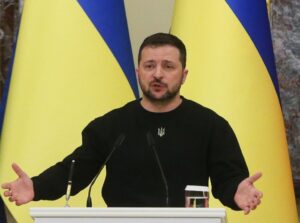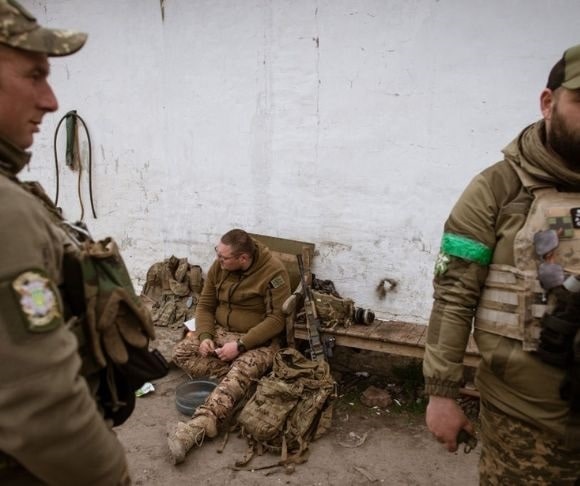Pitched battles rage as the resilient and courageous Ukrainian armed forces continue to bloody the Russian invaders after nearly 450 days of fierce fighting. There is no end in sight for ground and air combat in the embattled country, and the status of the conflict is worth a review. After the unprovoked invasion of Feb. 24, 2022, there were early but brief wins for Kremlin forces. Moscow’s army made significant progress moving from the east and north into Ukraine, but quickly faltered with insufficient logistics planning and resupply. Russian troops were unprepared for the courageous and successful resistance that brought their momentum to a standstill. In contrast, Kyiv’s ground and air forces have been steadily taking back lost ground, but it has been a slog. Russian forces continue to occupy significant stretches of eastern and southern Ukraine.
Russians Not Making Progress in Ukraine
Regular Russian ground soldiers, armor, and artillery forces with a substantial percentage of conscripts have been joined by Wagner Group mercenary paramilitary units. Though in many ways more experienced, the Wagner Group fighters have not added much to Moscow’s ground combat successes. Nonetheless, the Russians continue to mount offensives. Throughout the battle for Ukraine, the Kremlin’s forces have relied heavily on massive airstrikes using exploding drones and manned bombers as cruise missile-launching platforms. But the number of missiles is depleting. The Institute for the Study of War (ISW) has kept close tabs on the daily ebb and flow of the conflict. A recent ISW dispatch explained:
“Ukrainian sources reported that nine Tu-95 and two Tu-160 strategic bombers took off from Murmansk Oblast and near the Caspian Sea and launched 18 Kh-101/555 cruise missiles at Ukraine. Ukrainian air defense shot down 15 of the missiles … Ukrainian Air Force Spokesperson Yuriy Ihnat noted that the fact that both the Tu-95 and Tu-160s carried far fewer missiles than their maximum load suggests that Russia continues to struggle with adequate production of such munitions.”
Diminished inventories could be problematic for the Russians in the face of a counteroffensive expected within a few weeks. Add the costly loss of Russian combat troops means Russian President Vladimir Putin’s brutal attack on Ukraine is not going well. A recent White House assessment of the Kremlin’s battlefield casualties since December 2022 put the number of Russian soldiers killed at 20,000 and 80,000 wounded. However, despite the horrific losses, “Russian ground forces still have substantial capability and capacity and continue to possess the ability to regenerate their losses,” Commander, US European Command, Gen. Christopher G. Cavoli, US Army, said during a recent hearing of the House Armed Services Committee. Cavoli also noted that the number of Russian troops in Ukraine is larger now than when the invasion first took place.
F-16 Fighter Jets May Yet Be on the Way to Ukraine

Volodymyr Zelensky (Photo by STR/NurPhoto via Getty Images)
Ukraine’s President Volodymyr Zelensky continues to press the United States and the rest of NATO for more advanced and effective weaponry, including F-16 Falcon fighter jets. Though the Biden administration has appropriated $113 billion in humanitarian and military support, Patriot anti-aircraft missile batteries and the High Mobility Artillery Rocket Systems have been dribbled out piecemeal, precluding sustained and devastating barrages. And Biden has nixed providing F-16s, saying training Ukrainian pilots and providing logistics support to the fighters is beyond Kyiv’s capabilities.
That may change, however. “Members of congress from both parties have called on Biden to supply Ukraine with long-range rocket artillery, called ATACMS, and modern F-16 fighter jets,” Nick Robertson reported in The Hill. “But the US pledge in January to provide M1 Abrams main battle tanks to Ukraine earlier this spring, after months of opposition from the White House, has given cause for optimism that the administration may come around to providing even heavier weaponry.” Still, Ukraine’s beleaguered but brave military forces are exacting a toll on Russian forces with what they have. “A massive fire erupted at an oil depot in Crimea after it was hit by two of Ukraine’s drones, a Russia-appointed official there reported [April 29], the latest in a series of attacks on the annexed peninsula as Russia braces for an expected Ukrainian counteroffensive,” according to David Rising, Associated Press.
The problem for the United States and the rest of NATO in supporting Kyiv’s campaign to drive out Russian forces is that there is no actionable strategy for achieving an end state to the fighting. Without a consensus on what “winning” looks like for Ukraine and its supporters, parceling out military support in dribs and drabs is not the answer.




